Inspecting an RV for Flood Damage
A flood-damaged RV can be hard to spot. Generally, an insurer will total a flood-damaged RV because it is very difficult to completely restore the integrity of an RV that has been damaged by rising floodwaters. A more expensive RV, however, might be salvaged as was the case of a Newmar that I recently inspected in Florida. I was told that it was purchased by a couple who only lived in it while building a new home.

This was a gorgeous 43 ft, 1-1/2 bath Dutch Star. I expected to find every bell and whistle and it certainly had them. I started my inspection as usual on the outside. I noticed that there was a lot of rust in the understorage and gas struts, but this isn’t terribly unusual in humid climates. The engine, however, was extremely clean as was the carpeting in the understorage areas.
Closer inspection showed that one of the storage areas had new carpeting that didn’t fit quite right. The courtesy cover for the stairs into the coach was also missing.
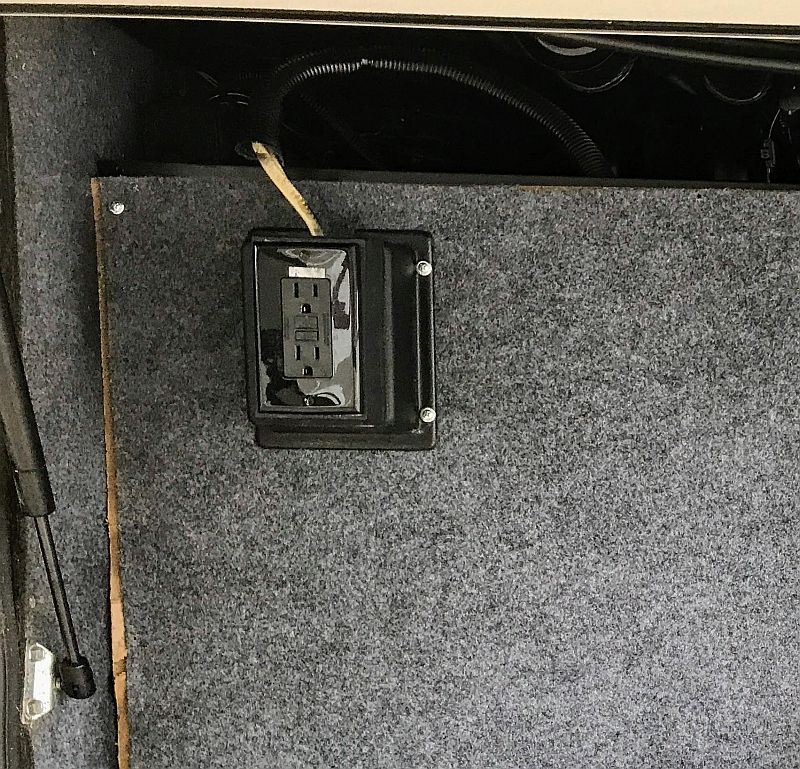
In addition, the Oasis water heater was not working. It seemed to be quite rusted and it was sitting on a rusted drawer. This would mean that the unit had no heat and no hot water. Also, the air conditioning didn’t work.
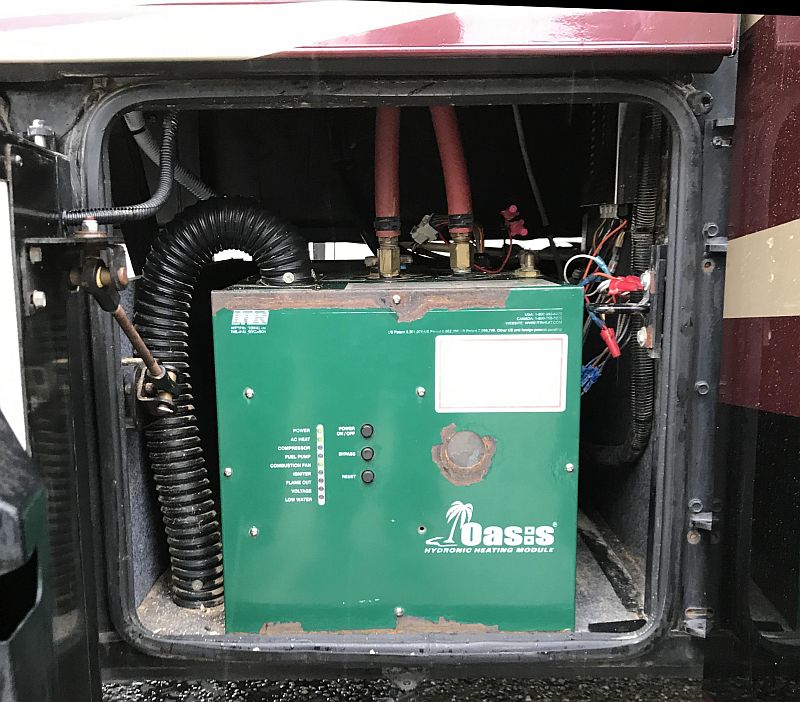
The 3-year-old generator had a lot of hours and a brand new exhaust pipe.
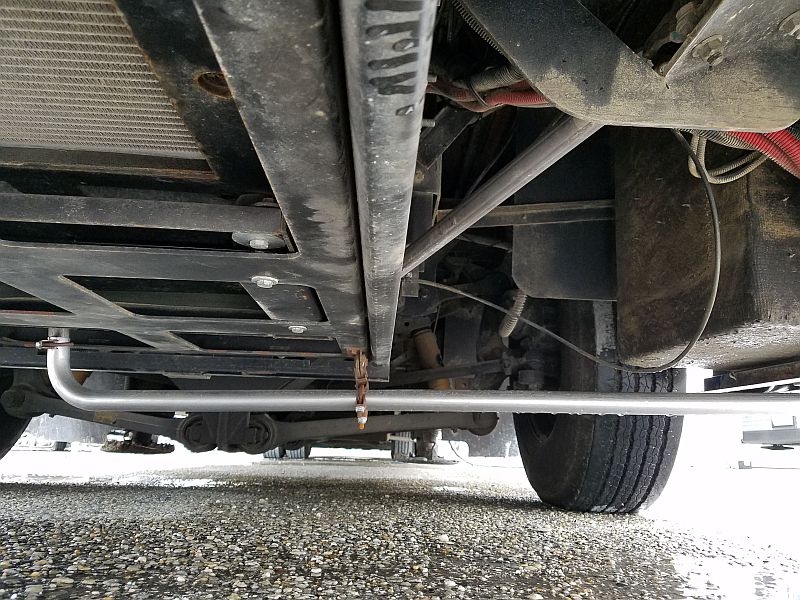
I suspected that this coach may have had electrical problems when I saw the eight brand new house batteries and the fact that the built-in 50 amp cord had a dogbone bringing it down to 30 amp. This is an all-electric coach, it needed every bit of those 50 amps. Perhaps the generator had been heavily used to supplement the power needed.
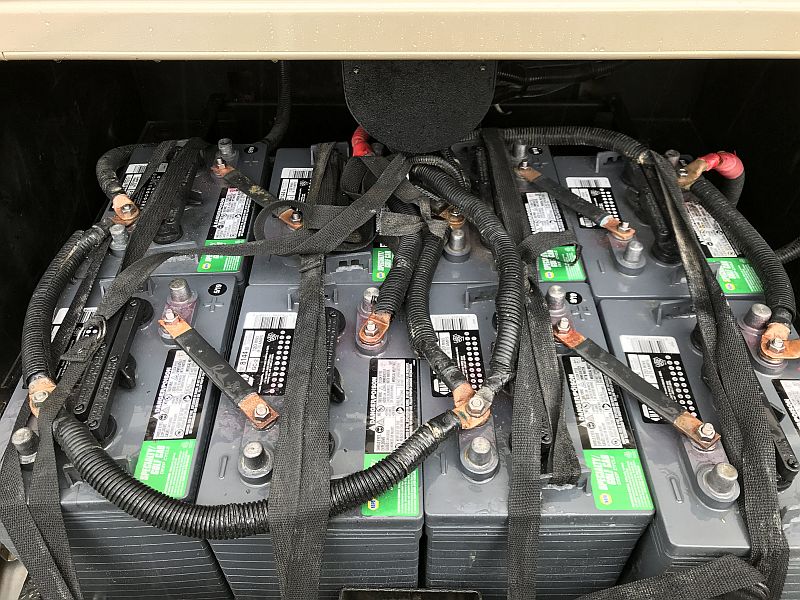
I decided to inspect the electrical panel. It was obvious that the panel had been rewired. Despite the fact this was a 42-foot all-electric motorhome, it had been rewired from 50amp to 30amp. In fact, a duplex breaker had been left on a shelf near the panel and a nearby drawer held new replacement electrical boxes. The edges of the cabinet were raw, indicating that it had been rebuilt but not finished.
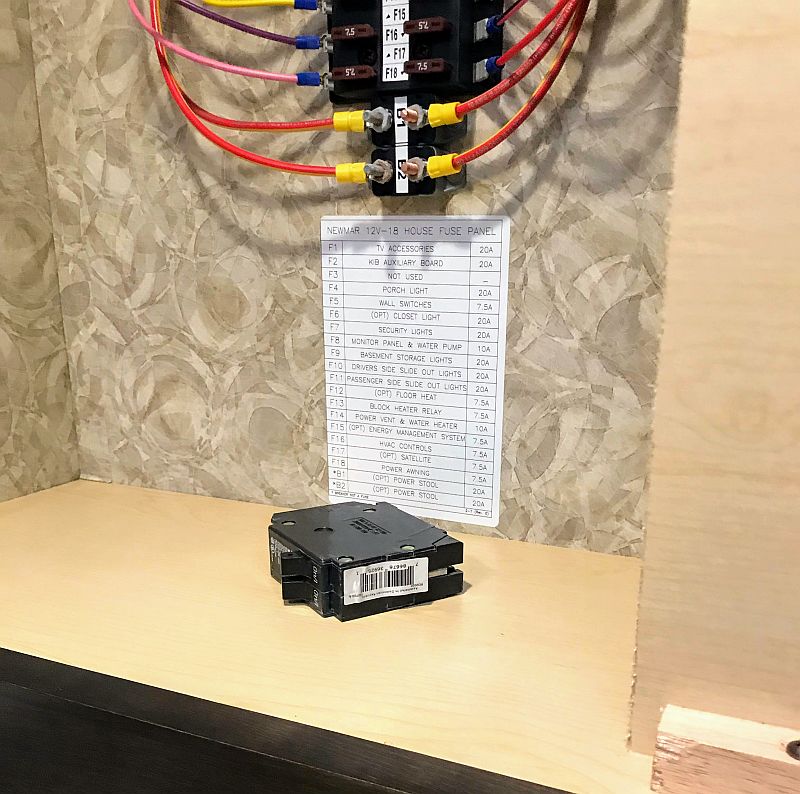
I began to test the interior electrical components and discovered odd little discrepancies. The wall behind the chairs was slightly bowed out, but the outlet worked. The wall in front of the televator had been partially replaced and the wiring to the TV had been redone but not finished. The cable jacks were not attached.
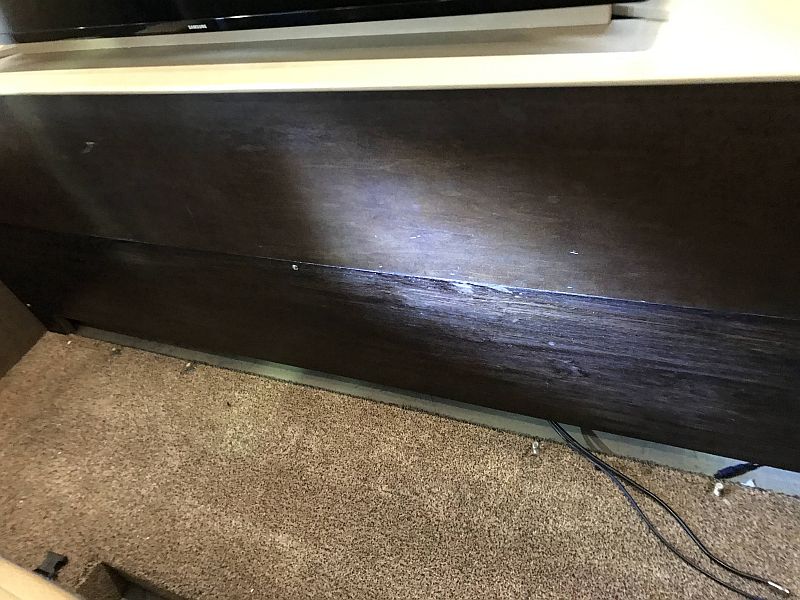
I started looking around the coach itself. The leather furniture, window trims with matching chairs and solid surface countertops appeared to be in excellent condition. Closer inspection of the window trim showed water rings on the fabric, and the brackets holding the trim were rusty. That sometimes happens when windows are left open in a storm, and the unit did not smell of mold, mildew or cover-up air fresheners, so I was not concerned.
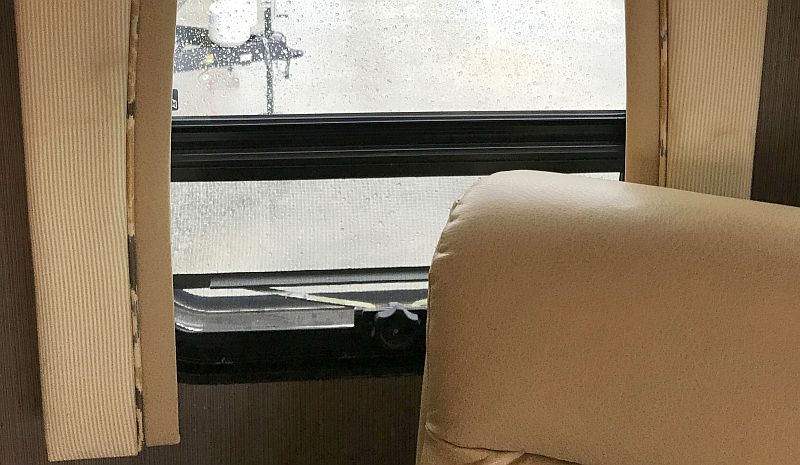
However, I did notice some damage to the cabinets along the floors and along the corner edges. It looked like the bottom of the cabinetry had gotten very wet. In addition, it appeared that some of the tiles had been regrouted. Since the floors were not spongy, I checked the kitchen drawers to see if the water problem had wicked into them.
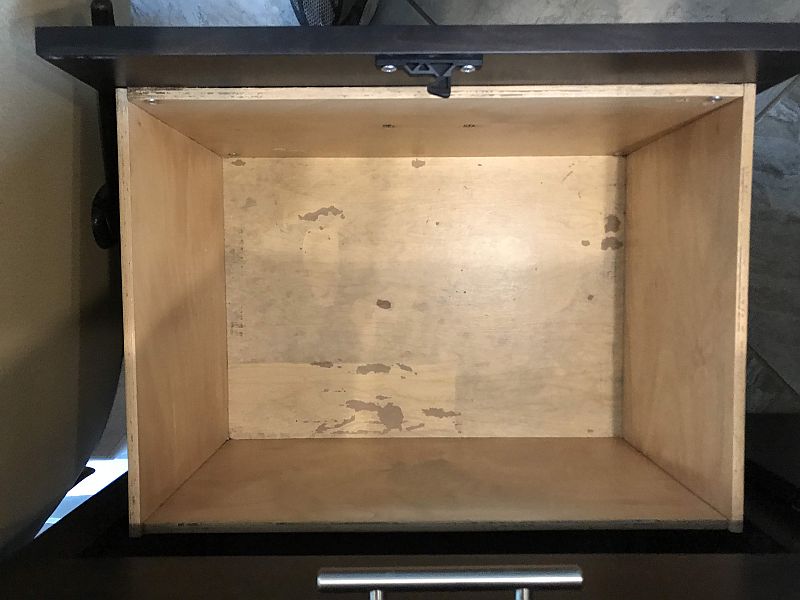
All the bottom two drawers in the kitchen – in fact, in the entire coach – showed water damage. I pulled the drawers out and discovered that the slides were rusted and the walls showed evidence of mud staining. I checked the courtesy drawer at the front of the rig and discovered there was still dried muddy water on the slide.

This led me to investigate the residential-style refrigerator and the drawer dishwasher, which was in the lower part of the cabinetry. By comparing serial numbers on the build sheet with the serial number of the appliances, I was able to determine that the refrigerator, drawer dishwasher, washing machine (bottom half of a stackable) and two of the TV sets had been replaced.
The pantry shelves showed water damage and staining up to about the 4-foot level, the same height as the water rings on the window trim. Further investigation of the pantry showed that about half the slides had been replaced. In fact, there was a slide still in the box waiting to be installed at the bottom of the pantry. The remaining slides showed signs of rust.
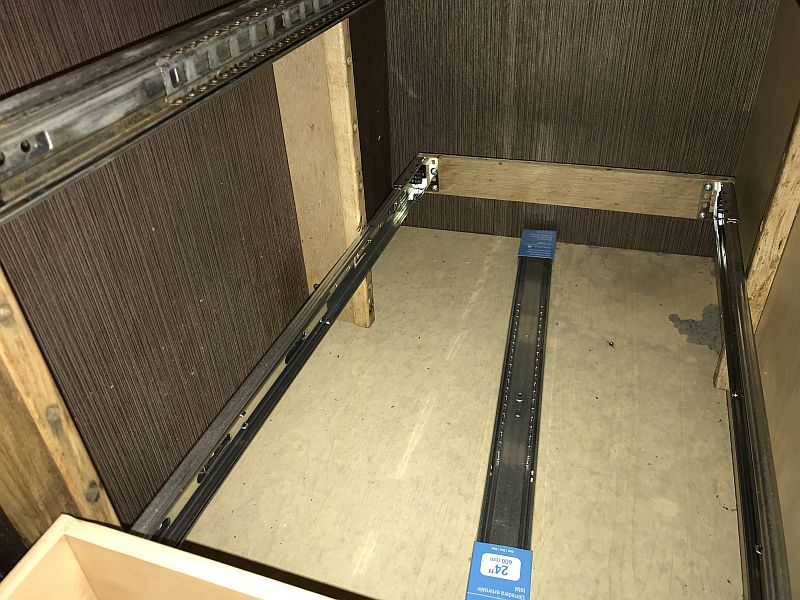
I also found two cabinets that had incomplete renovations. Screws were started but not tightened. A nearby cabinet held TV equipment with a layer of sawdust.
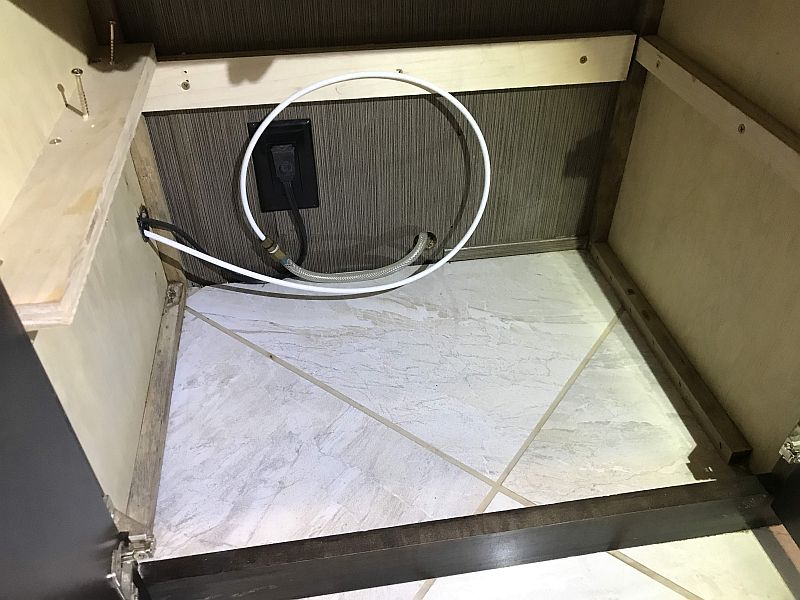
Looking in the half-bath, I noticed that the plumbing had been replaced and still had the UPC sticker on it. The sticker indicating access to the built-in vacuum, located under the sink, was very wrinkled.
In the kitchen, the right sink bore signs of rust. The city water connection didn’t work. However, the pump did so I could use the freshwater fill to test the faucets.
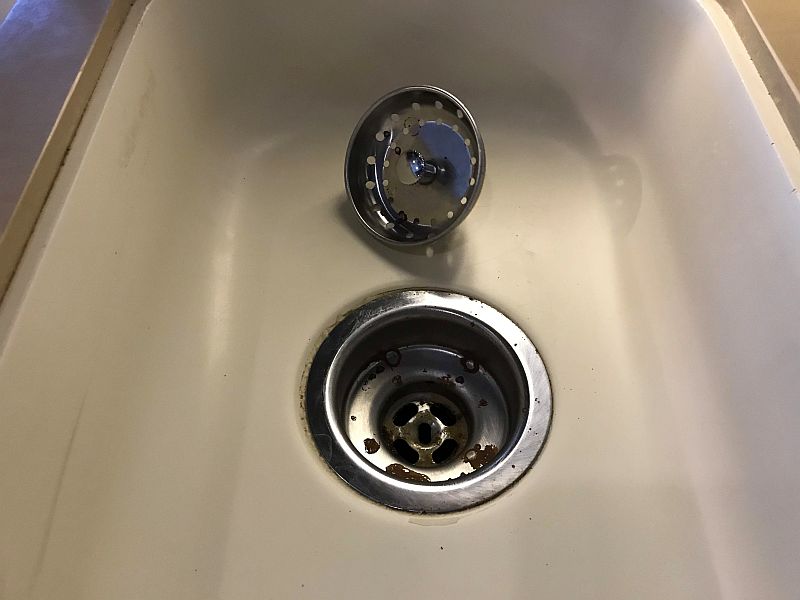
The slide for the pull-out countertop was clearly rusted.
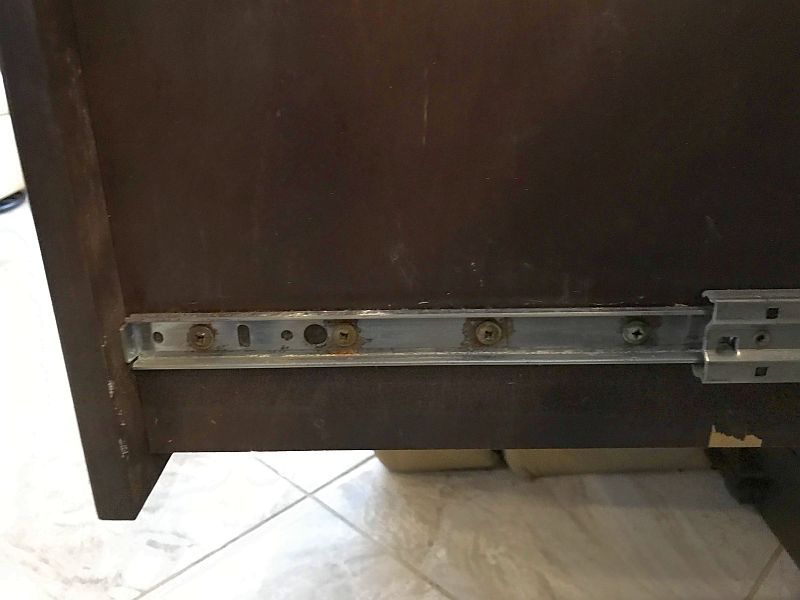
In the master bedroom, I opened the bed and discovered the platform under the new mattress was swollen and damaged. It had been covered so the damage couldn’t be seen from the outside. The platform itself was solid, but the hinges had broken and the struts didn’t work.

Looking around the master bedroom, I was able to find staining at about the same 4-foot level all around, including this window over the dresser.
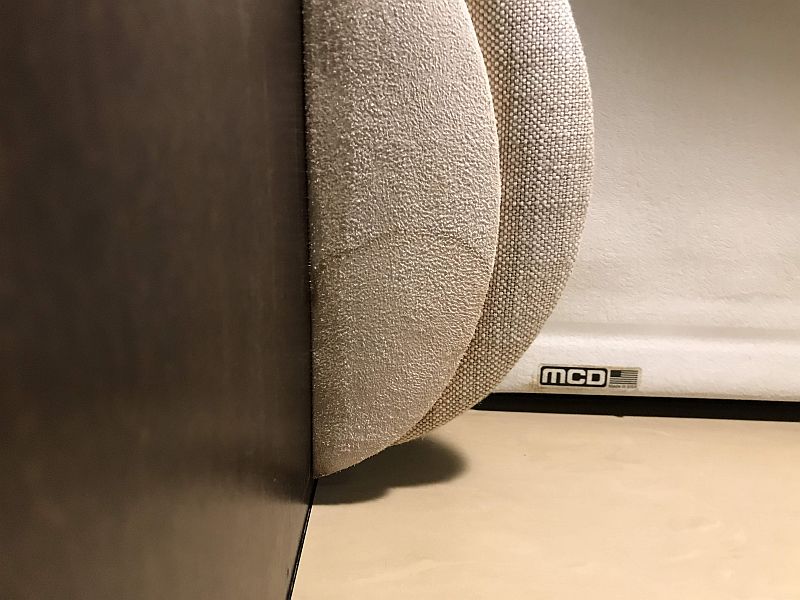
It was obvious that something very wet had happened to this rig. My conclusion is that the rig was flooded up to a level of about 6 – 8 feet, but immediately drained and taken for a professional restoration. It appears that the restoration was not completed before the sale was attempted.
